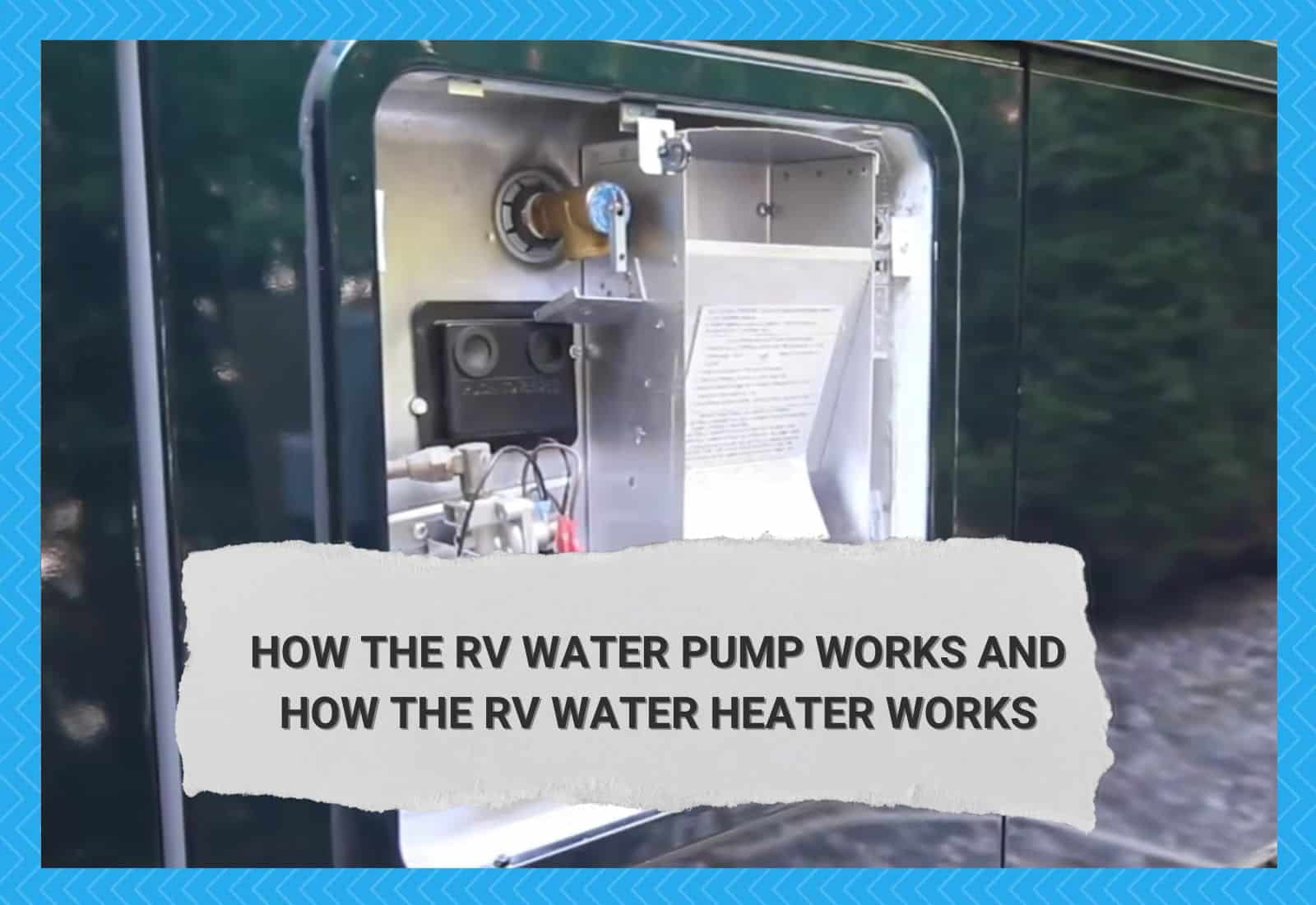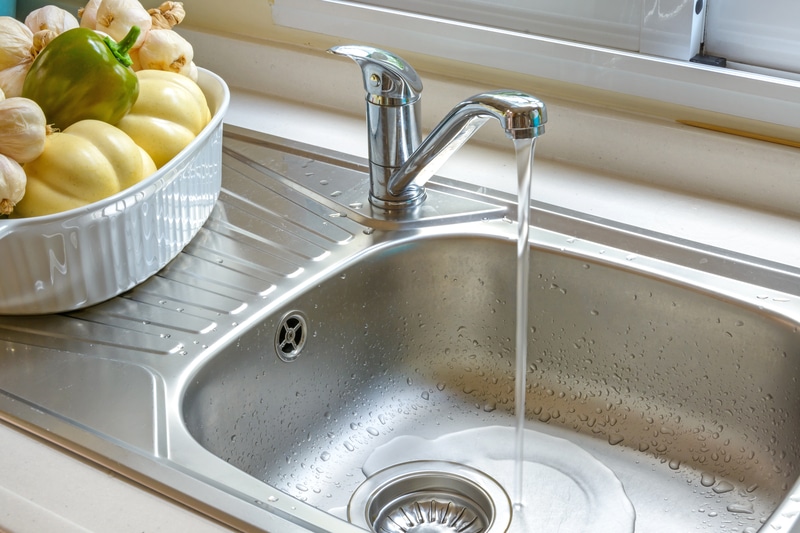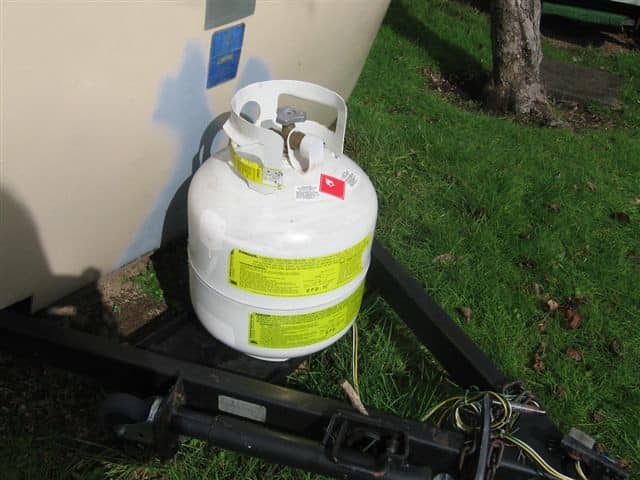
There are two water supply options in a recreational vehicle; one allows you to run the sinks, shower, and toilet using water from outside the motorhome.
A freshwater tank and pump make up the second water system, which is located inside the motorhome. With this, you can take your running water with you everywhere you go. Let’s have a deeper look at how both of them work!
Furthermore, the pump activates to turn water from the freshwater tank to the line if the water pressure from the hookup is insufficient. Just turn off the pump and don’t use it until absolutely necessary to preserve your water supply.
What does the RV Water Pump Do?
More frequently, you’ll probably find yourself camping without access to water as you make the most of the freedoms that RVing offers. You must fill the freshwater tanks in your RV before camping if there is no water connection at your campsite.
Your RV’s fresh water tanks will provide the water, and your water pump will provide the pressure needed to get it to your faucets, toilet, and showerhead.
You will undoubtedly come across locations where the water pressure is a little low, even while camping. It is not pleasant to turn on the shower only to be disappointed by the water pressure.
It is possible to increase the pressure inside your RV by using the water pump. An unpleasant low-pressure shower is no longer something you have to put up with. Many RVers even forgo their city water connection in favor of their water pump.
How the RV Water Pump Works
Running a pump without any fluid in it is one of the easiest ways to ruin it. The primary function of a pump is to transfer liquids from a lower to a higher pressure region, typically against the pressure of gravity.
Usually, a diaphragm pump with three to five chambers provides a water pump in a recreational vehicle. The electric motor powers the diaphragm, which has a valve on either side of the chamber to create suction.
In order to allow water to enter the chamber, the intake valve must be opened, the diaphragm must expand to increase volume and decrease pressure, and the outlet valve must be closed.
When the water pressure rises enough, the diaphragm will compress, reducing the volume of the chamber, and the inlet valve will close, allowing water to flow out through the exit valve.
An RV’s water lines are pressurised by the water pump to drive water out of the system. Pressure is released and the water pump is started when a water fixture is opened
Till you close the fixture, water will flow after the water pump repressurizes the water lines. The water lines will repressurize when the fixture is turned off, which will shut the water pump off as well.
When the RV is not linked to shore power, the pump is powered by the 12-volt system, which enables it to operate on battery power. Even when camping off the grid, pressurised water is available by running the water pump off the battery bank of an RV.
Balancing The Water Pressure and Flow Rate
Typically, the pressure and flow rate of 12V electric water pumps are low. It’s a job for which a diaphragm pump was made. They are self-priming and can withstand brief periods of dry running.
This eliminates the need to prime the pump following a system drain because the pump will be ready to go right away.
Constant-Speed Pumps
Pumps of this type are almost always constant-speed pumps. RV water pumps pulse because they are on/off switches that are striving to maintain a constant pressure.
As soon as the system pressure reaches the setpoint, the pump will shut off; however, it will restart automatically when the pressure dips below the setpoint.
However, pulsating can be avoided using variable-speed pumps, which also tend to operate more quietly. Even though they’re often only found in more expensive RVs, you can have the one in yours upgraded.
However, if you are only using the water in your fresh water tank and have no other water sources available, you can leave the pump running. Your pump should only operate when there is a need for water, such as when you are using a faucet or toilet.
However, before setting off on the road, you should disconnect the water pump. It would be quite inconvenient to have running water while driving if a bump or bounce on the road had opened a faucet.
Ensure to turn off the water pump at night or whenever you will not be around the RV.
How the RV Water Heater Works
Water Heater – What Is It?
The majority of motorhomes are outfitted with the appliance known as a water heater. This is due to the fact that the water that is delivered to your home must first travel through a network of pipes, during which time it will typically become either chilly or cool, depending on the season.
A water heater is required in order to attain water at a temperature that is suitable for taking a shower, a bath, or washing clothes.
How Does RV Water Heater Components Operate?
RV water heater tanks typically store between 6 and 10 gallons, so there will always be plenty of hot water on hand.
Aluminum and steel are the most common materials for these tanks, and they can be encased with polystyrene, porcelain, and other insulating materials for added efficiency.
An RV water heater anode is included with steel water heaters to further reduce the risk of corrosion.
The type of water heater you use will determine how many and what types of parts you need for your RV water heater. But in general, a heating element, a thermostat, and valves are all standard equipment in any recreational vehicle’s water heater.
- Heating Element
A tank-based electric water heater uses an electric heating element to warm water as it sits in the tank. While a gas burner is the source of heat in a gas water heater. They’re both anchored to the cellar of the tank.
- Thermostat
Most modern water heaters will include a thermostat on the outside that may be used to monitor and alter the water’s temperature. The thermostat is responsible for regulating the temperature of the water stored in a water heater.
- Valves
The tank’s drain valve is situated towards its outermost rim, near its bottom. A drain valve is installed in a tank to allow for the removal of silt that has settled to the bottom.
Water Heater Turnoff Valve One can find the water heater’s turnoff valve on the water heater’s exterior.
By doing so, you can prevent any additional water from entering the tank. Tank’s water is under extreme pressure, thus a safety valve is installed to release some of that pressure.
By releasing excess pressure, the pressure relief valve prevents potentially devastating situations.
Types of Water Heaters and Power Supplies Used
There are mainly two types of tanks: tank and tankless. Both water heaters need power to work. Water heaters for recreational vehicles come in three varieties: electric, propane, and combination.
A water heater that operates on electricity (often from a wall outlet) is called an electric water heater. Although this is the cleanest and most cost-effective method of powering a heater, it requires a constant supply of electricity, making boondocking impossible without an inverter.
- Propane
Camper trailer gas water heaters run on propane. Using this approach to generate electricity for a water heater is the most economical option. With no need for an electrical connection, you may enjoy hot showers even when dry camping or boondocking.
A combination RV water heater, as the name implies, can be powered by either propane or electricity to heat water. Depending on your needs, you can choose between natural gas and electricity. If you need hot water quickly, you can use both.
There are two types of ignition used in recreational vehicle water heaters: the manual pilot light, which must be lighted from outside the RV, and an electric spark ignition. As an alternative, there may be an ignition switch installed inside the RV that could be used to turn on the heater from a distance.
The Bottom Line
The water heating system – Water Pump and Water Heater – are completely safe to use. They’re just simple mechanical equipment, but they do an incredibly important job for you.
When you take the time to learn how to properly care for and operate your equipment, they will serve you well for many years to come.
Keeping up with routine maintenance is essential to ensuring their continued usefulness. Always start with the most obvious and simplistic explanation when troubleshooting complex problems, such as a malfunctioning water heating system in your recreational vehicle.
Doing so will save you both money and effort, as they will serve you well as a reliable water supply (in your RV) for many years to come!



